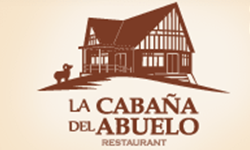This place from Baja california Mexico it's one of the most beautiful places in the world and I'm not just talking about that they have the most famous spa in all around the world it's because of what you can see here below:
HISTORY
 Tecate is the oldest border town in Baja, though in terms of peninsular history, it's still relatively young. In the early 1800's, a few mestizo farmers began working the valley lands. As word got around that the valley was fertile and water - supplied by the Tecate and Las Palmas Rivers - was abundant, more followed. In 1831, Peruvian Juan Bandini receive a land grant of 4,500 hectares from the Mexican government and two years later lais out a town to serve the budding farming community.
Tecate is the oldest border town in Baja, though in terms of peninsular history, it's still relatively young. In the early 1800's, a few mestizo farmers began working the valley lands. As word got around that the valley was fertile and water - supplied by the Tecate and Las Palmas Rivers - was abundant, more followed. In 1831, Peruvian Juan Bandini receive a land grant of 4,500 hectares from the Mexican government and two years later lais out a town to serve the budding farming community.
Long before Bandini's arrival, the valley surrounding Tecate had been sporadically inhabited by Yuma Indians, who called it Zacate. The Yumas revered 1,520 - meter (5,000 foot) Monte Cuchumá, the valley's most outstanding geographic feature, which today straddles the U.S. - Mexico border. Surviving Kumyais, a sub-tribe of the Yumas, still revere the mountain, and in 1982 they successfully obtained a U.S. agreement to dismantle radio towers on Cuchumá's California side.
Most likely the name Tecate developed from a Spanish corruption of the Indian name for the valley, Zacate. Another theory, rather unlikely, has it that Tecate comes from the English "to cut," since Anglos to the north often came to the valley to cut wood in the late 19th century - though the vegetation in the valley has always consisted mostly of treeless chaparral. The settlement became the capital of a new Mexican municipality in 1892, following completion of a railroad built to connect Tijuana, Tecate, and Mexicali with the national rail system.
Tecate became a household word in Mexico after the founding of the Tecate Brewery in 1943. Aside from the brewery and a few maquiladoras east of the city on Mexico 2, the town remains primarily dependent on agriculture. Tourism, though relatively limited, is also a source of local revenue.
GASTRONOMY
Baja California's Gastronomy declared a State Heritage
RED LOBSTER

This native specie from the coasts of Baja California
has been nowadays certified. It is traditionally eaten
in the State, and the most famous way to prepare it
is the lobster with beans of Puerto Nuevo, although
it is also prepared grilled and in salads, among other
preparations.
ABALONE
Baja California is the best quality abalone producer of
the world, hosting great fields of this mollusk. It is traditionally
eaten across the State, prepared in ceviche,
shaved, in filet, in brine, in salad, in cocktails and as
abalone chorizo, among others.
ABALONE

Baja California is the best quality abalone producer of
the world, hosting great fields of this mollusk. It is traditionally
eaten across the State, prepared in ceviche,
shaved, in filet, in brine, in salad, in cocktails and as
abalone chorizo, among others.
TUNA FISH

Mexico is one of the main producers of tuna fish in
the world, and Baja California has the most number of
feeding pens of the Country. Nowadays, this fish plays
an important roll within the contemporary cuisine of
Baja California, being present in a whole diversity of
fresh dishes.
LOBSTER WITH BEANS

This dish became popular in the 1950s when the
wives of the fishermen of Medio Camino, nowadays
Puerto Nuevo, began to offer the tourists visiting
the area the most common dish among them: fried
red lobster accompanied with beans, rice, salsa and
wheat flour tortillas. It is the most famous and requested
recipe in the port
FISH TACOS

They are prepared with marinated school shark, covered
with flour and egg. Once fried, it is eaten in corn
flour tortillas with salsa, mayonnaise and lime.
CLAMATO
It is said that this beverage was created in El Acuedcto
Bar at Mexicali. It is prepared with tomato juice, clam
juice and spices. It is usually served with few drops of
lime juice, salt and Worcestershire sauce, or sometimes
with beer or tequila.
MARGARITA COCKTAIL

This is the most significant and world famous cocktail
of Mexico. It was created in Ensenada during the 40s
by Mr. David “Deny” Negrete Covarrubias, who was
once asked by a lady friend. Mrs. Margarita Orozco,
to prepare a beverage with salt. Deny took a shaker,
squeezed the lime juice, added white tequila and
Cointreau, shaked it with ice and served it in a champagne
glass, frosted with salt along the edge.
WINE

Over the last decades, Baja California has become the
main wine producer of Mexico, achieving international
acknowledgment for its great quality. In the valleys
of Guadalupe, Calafia, Santo Tomás, San Vicente
and San ntonio de las Minas, grapes like Cabernet
Sauvignon, Merlot, Tempranillo, Chardonnay,
Sauvignon Blanc and Moscatel are produced by
the main producing houses — Santo Tomás, L. A.
Cetto, Monte Xanic and Casa Pedro Domecq among
them— which create white, rosé, red, sparkling and
generous wines.
http://rutasgastronomicas.sectur.gob.mx/en/descargas/rutas/R1/cultura_vino_y_acuario_mundo.pdf
PLACES TO VISIT
Most popular restaurants
Address
- Blvd. Benito Juárez #1450 Col. El Encanto Sur
Contact
- (665) 521-3070 / (665) 521-3066 al 69
Contact
























